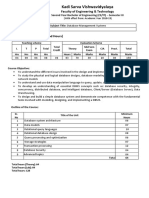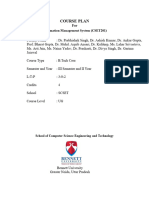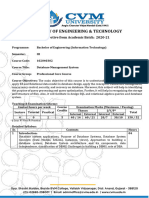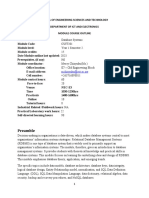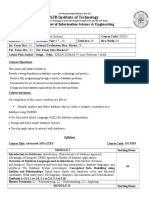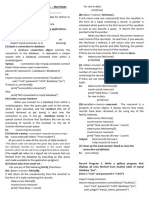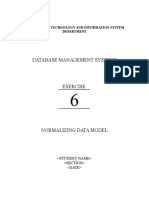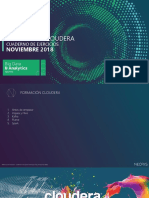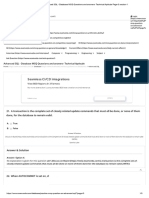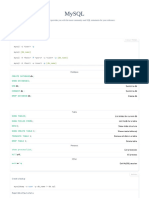0% found this document useful (0 votes)
18 views5 pagesDbms Syllabus
The document outlines the course structure for BCS403 - Database Management System at Visvesvaraya Technological University, detailing objectives, teaching methods, and modules covering database concepts, SQL, normalization, and NoSQL databases. It specifies the assessment criteria, including Continuous Internal Evaluation (CIE) and Semester End Examination (SEE), with a focus on practical components and project-based learning. The course aims to equip students with foundational knowledge and skills in database design and management.
Uploaded by
sunillamani0770Copyright
© © All Rights Reserved
We take content rights seriously. If you suspect this is your content, claim it here.
Available Formats
Download as PDF, TXT or read online on Scribd
0% found this document useful (0 votes)
18 views5 pagesDbms Syllabus
The document outlines the course structure for BCS403 - Database Management System at Visvesvaraya Technological University, detailing objectives, teaching methods, and modules covering database concepts, SQL, normalization, and NoSQL databases. It specifies the assessment criteria, including Continuous Internal Evaluation (CIE) and Semester End Examination (SEE), with a focus on practical components and project-based learning. The course aims to equip students with foundational knowledge and skills in database design and management.
Uploaded by
sunillamani0770Copyright
© © All Rights Reserved
We take content rights seriously. If you suspect this is your content, claim it here.
Available Formats
Download as PDF, TXT or read online on Scribd
/ 5












